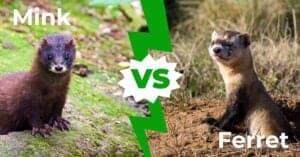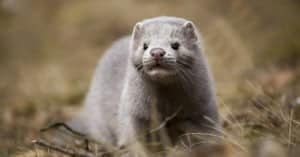There are 88 counties in Ohio, and you can find mink (Neovison vison) in all of them. The mink has a long history in Ohio, thanks to its welcoming habitat and abundant food source. Keep reading to learn about mink in Ohio, including its history, habitat, and more.
Ohio’s Mink History
Mink are primarily nocturnal animals belonging to the Mustelidae family. They are related to weasels, otters, fishers, ferrets, martens, and badgers. Minks have a long history in Ohio, dating back to pre-settlement days, due to the region’s abundance of streams containing wooded banks with plentiful vegetation. The highest occurrence of mink sightings is in the eastern and southeastern regions of Ohio.
Historically, trappers held mink to the highest value because of the demand for its pelt within the luxury garment markets. With a decrease in the demand and the increase in commercial mink farms, the population in Ohio has increased.
Conversely, the mink population across the U.S. is threatened due to reduced wetlands and habitat destruction. Because of that, many states have now set limits on trapping seasons. Mink hunting is illegal in Ohio, but when determined to be a nuisance, threatening property owners or their livelihoods, it can be taken without legal repercussions.

Mink have been a mainstay in Ohio since pre-settlement days.
©John Pitcher/iStock via Getty Images
How to Identify a Mink
Mink are commonly misidentified due to their resemblance to wildlife in the same family, like weasels, otters, and ferrets. They possess the same long, slender body, but mink are usually larger animals with bushier tails, weighing up to three pounds and measuring 12-17 inches. Males are generally bigger than the females.
The mink’s unique fur is a rich, fudgy brown that, at times, appears black to the naked eye. Additionally, mink usually have a white chest or chin patch and spotted undersides. Other characteristics include a flat, pointy face featuring small, rounded ears and beady-looking eyes. The mink has short legs and sharp claws.
Minks have a life span of up to five years, with three to four being the average. Because of their ability to move quickly, minks are experts at eluding predators by retreating to a safe, secluded place.
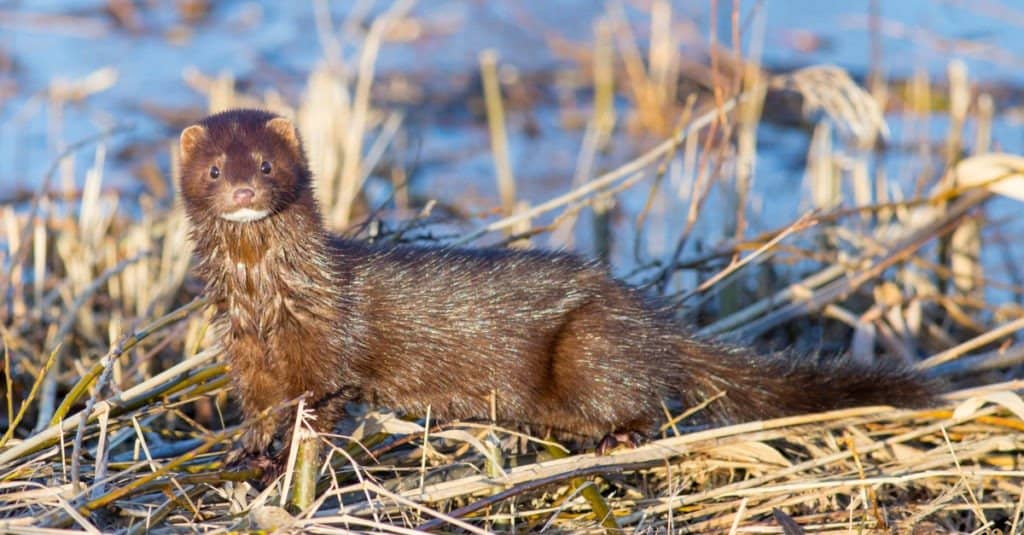
Mink have similar characteristics as mammals in the same family, leading to misidentification.
©shauttra/Shutterstock.com
The Mink’s Habitat
Mink are drawn to rivers, streams, marshes, ponds, and lakes outlined by woody banks and vegetation. They are generally solitary creatures until mating season when they willingly associate with others.
The females can breed at one year old and create dens in burrows along the water’s banks or take over an abandoned beaver or muskrat hole. Minks are primarily nocturnal but can be seen at dusk, dawn, or even daytime hours, scouring the water’s banks in search of food.
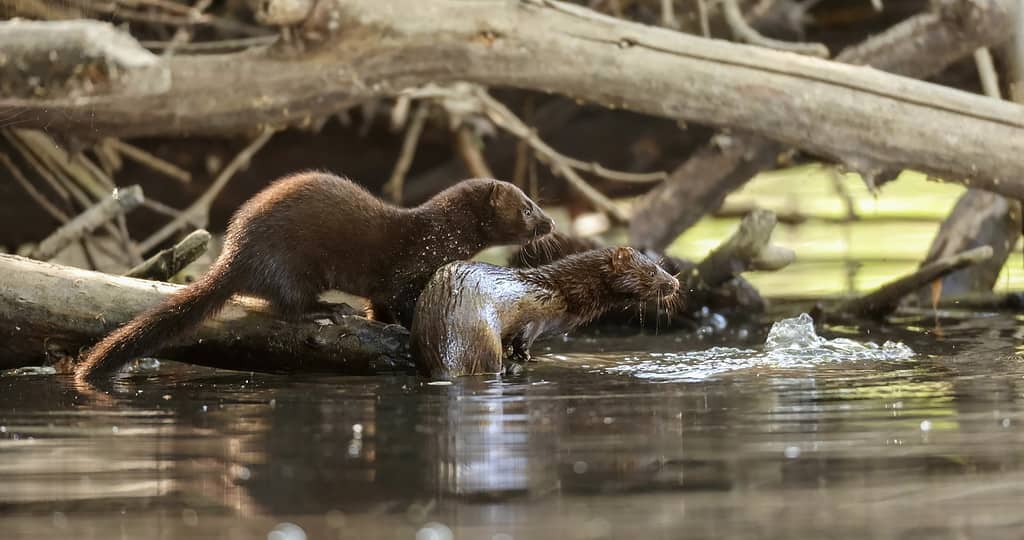
Mink prefers rivers, streams, and lakes with woody banks and vegetation.
©Banu R/iStock via Getty Images
A Mink’s Diet
Minks are carnivores with seemingly endless appetites. They prefer eating crayfish, frogs, and rodents but will also take on ground birds, snakes, fish, and frogs. When minks become nuisances, they raid chicken coops and household fish ponds, taking multiple chickens and fish to stock their dens for later meals.
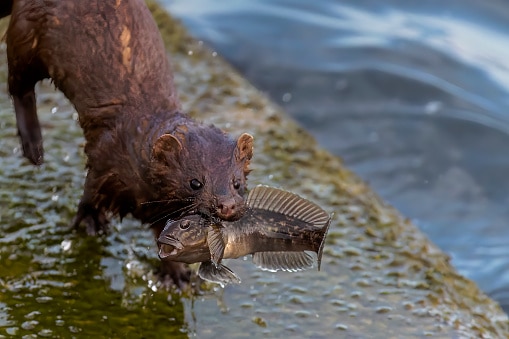
Mink are carnivores with voracious appetites, storing excess food in their dens and burrows.
©Karel Bock/iStock via Getty Images
Additional Mink Facts
Minks possess anal scent glands that excrete fluids similar to skunks. The fluid is not as potent as a skunk’s offering. Minks use the scent to mark territory and defend itself. Males can engage in violent and deadly fights with other males while protecting their territory. The male is solitary until the breeding season, which runs from January through April. Females are ready to breed after one year, taking over an abandoned beaver or muskrat hole or constructing a den.
The gestation period is variable, lasting between 39 and 76 days, with an average of 42 days. There are usually three to six offspring, opening their eyes at five weeks and fully maturing at five months. The mother is solely responsible for raising the young.
When minks are angry or feel threatened, they may hiss, screech, snarl, or bark. Conversely, when they are content, they have been known to purr, similar to a housecat.
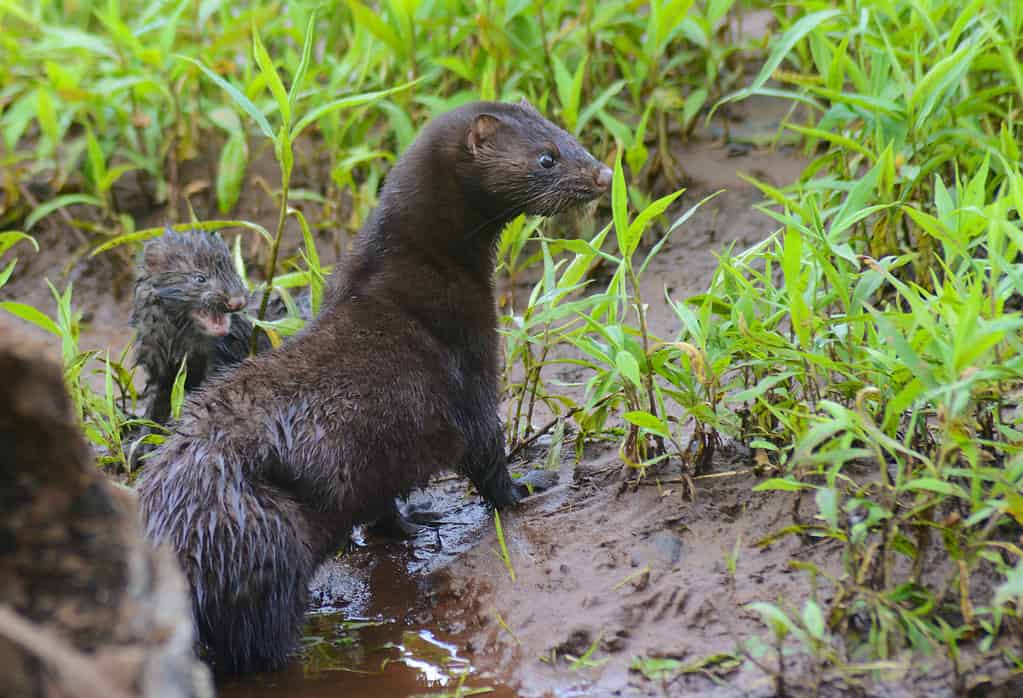
Mink will protect their territory, often engaging in violent battles with others.
©Betty4240/iStock via Getty Images
The photo featured at the top of this post is © Steven Flannigan/iStock via Getty Images
Thank you for reading! Have some feedback for us? Contact the AZ Animals editorial team.



